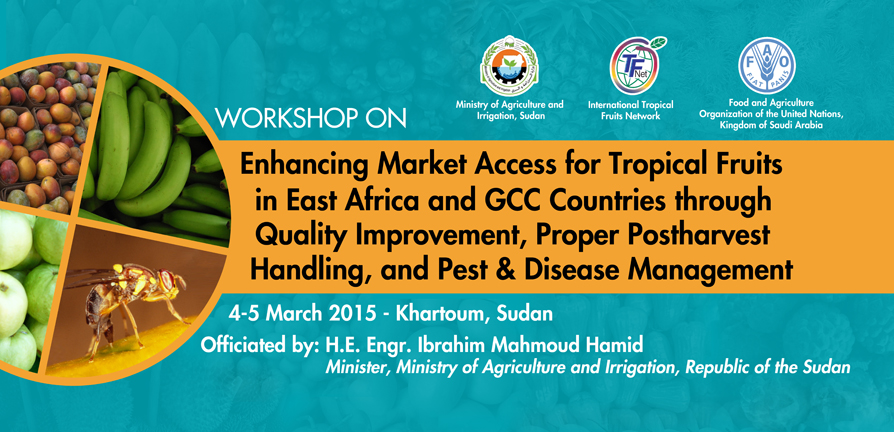
In 2012, the estimated world banana and other tropical fruit production were 101 million tonnes and 20 million tonnes respectively. Besides banana, mango was the main fruit produced accounting for almost 40 percent of total production followed by pineapple 25 percent, papaya 10 percent and avocado at 4 percent. Other minor tropical fruits such as durian, rambutan, litchi, guava, pitaya, passionfruit and mangosteen made up about 20 percent of total tropical fruit production. Asia is the main producer of tropical fruits, followed by Latin America and the Caribbean, Africa, and Oceania. Generally 90 percent of the fruits produced are consumed domestically with only an estimated 5 percent traded as fresh fruits and another 5 percent as processed products. The popularity and demand for tropical fruits is expected to rise due to the increase in tourist traffic to producing countries, aggressive promotion of the fruits in terms of the exotic tastes, nutritive benefits for health, and current efforts to produce exportable quality and safe fruits.
The main tropical fruit producing countries in Africa are S. Africa, Kenya, Tanzania, Nigeria, Ethiopia and Congo. In 2011, the main tropical fruit produced in Africa were bananas 16,380,507 tonnes, mangoes, mangosteen, and guavas (7,135,528 tonnes), papayas (1,330,625 tonnes), and pineapples (3,652,746 tonnes).
In the same year, the main producers of bananas were Angola (2,991,454 tonnes), Tanzania (2524740 tonnes), Cameroon (1,400,000 tonnes), Kenya (1,394,412 tonnes), Burundi (1,184,075 tonnes), and Egypt (1,129,777 tonnes).
The main countries producing mangoes, were Kenya (2,781,706 tonnes), Nigeria (860,000 tonnes), Egypt (786,528 tonnes), Sudan (630,000 tonnes), and Congo (335,000).
Meanwhile, the main producers of papayas were Congo (230,000 tonnes), Kenya (117,903), Ghana (50,000 tonnes), Ethiopia (38,694 tonnes), and Mali (35,000 tonnes).
Finally, the main producers of pineapples were Nigeria (1,420,000 tonnes), Kenya (465,938 tonnes), Benin (375,636 tonnes), Angola (280,906 tonnes), and Congo (205,000 tonnes).
The main tropical fruits produced in Sudan were mangoes (27,500 ha), bananas (23,000 ha), citrus (27,000 ha), guavas (6000 ha), and there had been increasing areas of papayas and pineapples.
Tropical fruits are also produced in other Arab States and GCC countries including Egypt, Oman, Saudi Arabia, United Arab Emirates and Yemen, where bananas, mangoes, papayas and pineapple are popular. Generally, the production of tropical fruits increased up to 40 percent in the period from 2000 to 2011, in these States.
As in the main tropical fruit growing countries in Asia and Latin America, smallholders in Africa are also faced with similar issues of low quality produce, pest and diseases incidences, and high postharvest losses, resulting in limited access to the market.
In the issue with pests and diseases, fruit flies have been regarded as a major pest to fresh fruit and can impact production, food security and trade in Africa. Besides this, Panama wilt disease on bananas caused by a fungus Fusarium oxysporium cubense TR 4 has recently been recognized as a major threat to the banana industry worldwide. This disease has affected many countries in Asia including China, Philippines, Malaysia and Indonesia, and has already been identified to affect bananas in Mozambique.
Other issues include the lack smallholder integration in the value chain and appropriate production technologies at the pre harvest and post-harvest stages, which results in postharvest losses and poor fruit quality.
Smallholder integration in the chain can be enhanced through capacity development in areas such as quality assurance, food safety, good agricultural practice for certifiable products, pest & diseases and postharvest management and understanding sanitary and phyto-sanitary regulations, to improve competitiveness for better market access.
Cognizant of the various issues relating to tropical fruit production and market, International Tropical Fruits Network (TFNet), together with the Sudan Federal Ministry of Agriculture and Irrigation, and Food and Agriculture Organization, Kingdom of Saudi Arabia, will jointly organize a workshop on ‘Enhancing Market Access for Tropical Fruits in East Africa and GCC countries through Quality Improvement, Proper Postharvest Handling and Pest & Disease Management’ in Khartoum, Sudan on 4-5 March 2015.
Altogether 25 participants and resource persons from eleven (11) countries, Sudan, Kingdom of Saudi Arabia, Ethiopia, Uganda, UAE, Sultanate of Oman, Yemen, Madagascar, South Africa, Australia and Kenya will participate in the workshop.
Workshop objectives
The main objectives of the workshop are to:
- Assess issues and challenges in developing the tropical fruit industry in participating countries, taking into account the impact on food security, income generation for smallholders and market access.
- Share recent information on pest and disease management in tropical fruits, especially on awareness of the impact of the wilt disease caused by Fusarium sp in bananas, including the strategies to mitigate and manage the disease
- Share recent information on the effect of fruit flies infestation in tropical fruits, including the strategies to control and manage the pest.
- Share information on the current postharvest technologies that can improve quality and marketability of tropical fruits, as the same time, conform to quality and safety standards to meet consumer’s preferences.
- Develop a strategy and action plan including policy implementation to improve postharvest and quality management and quality and to mitigate effect of pests and diseases (including fruit fly management and Fusarium sp. banana wilt disease), incorporating sanitary and phytosanitary (SPS) and quarantine regulations.
